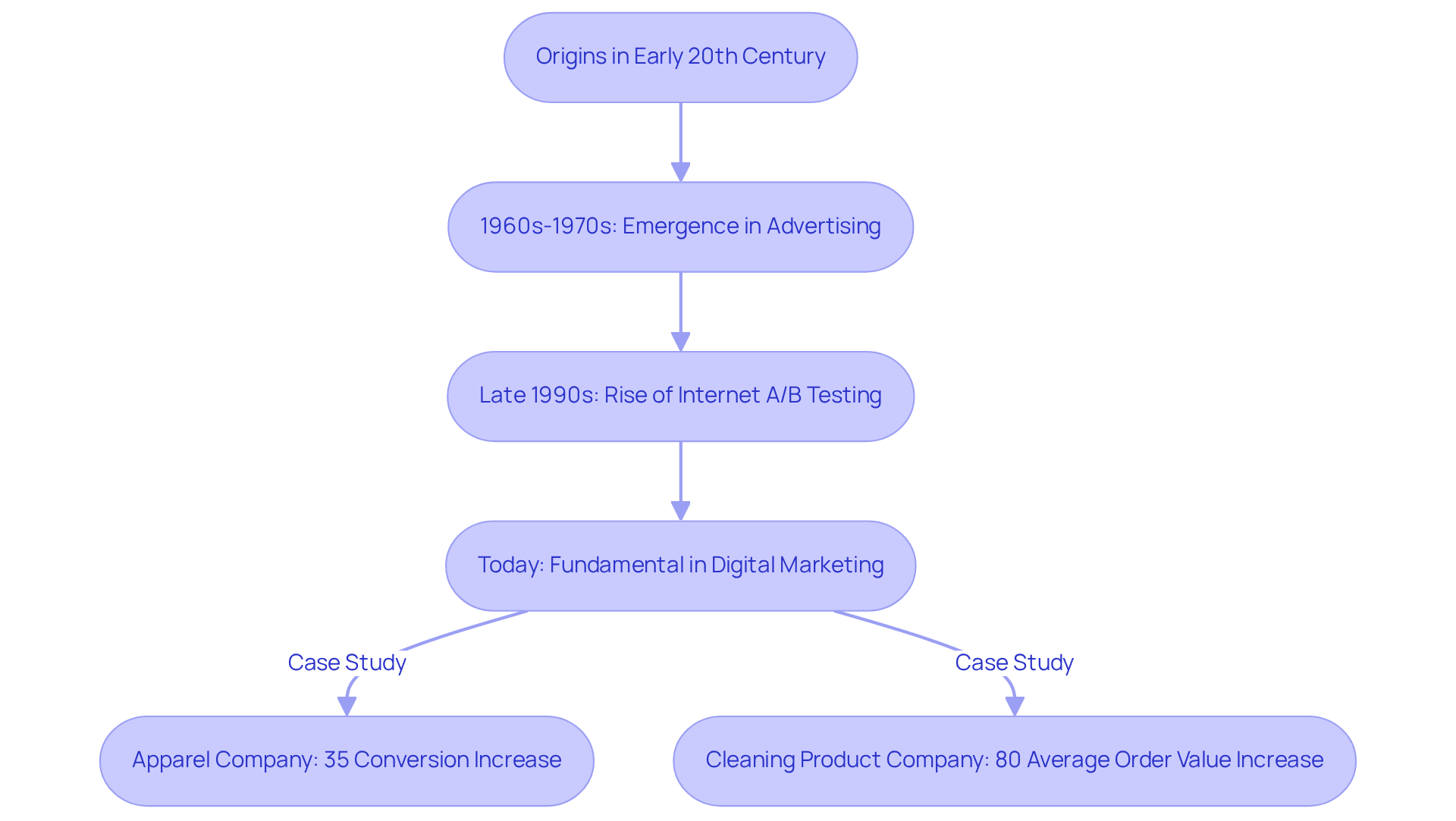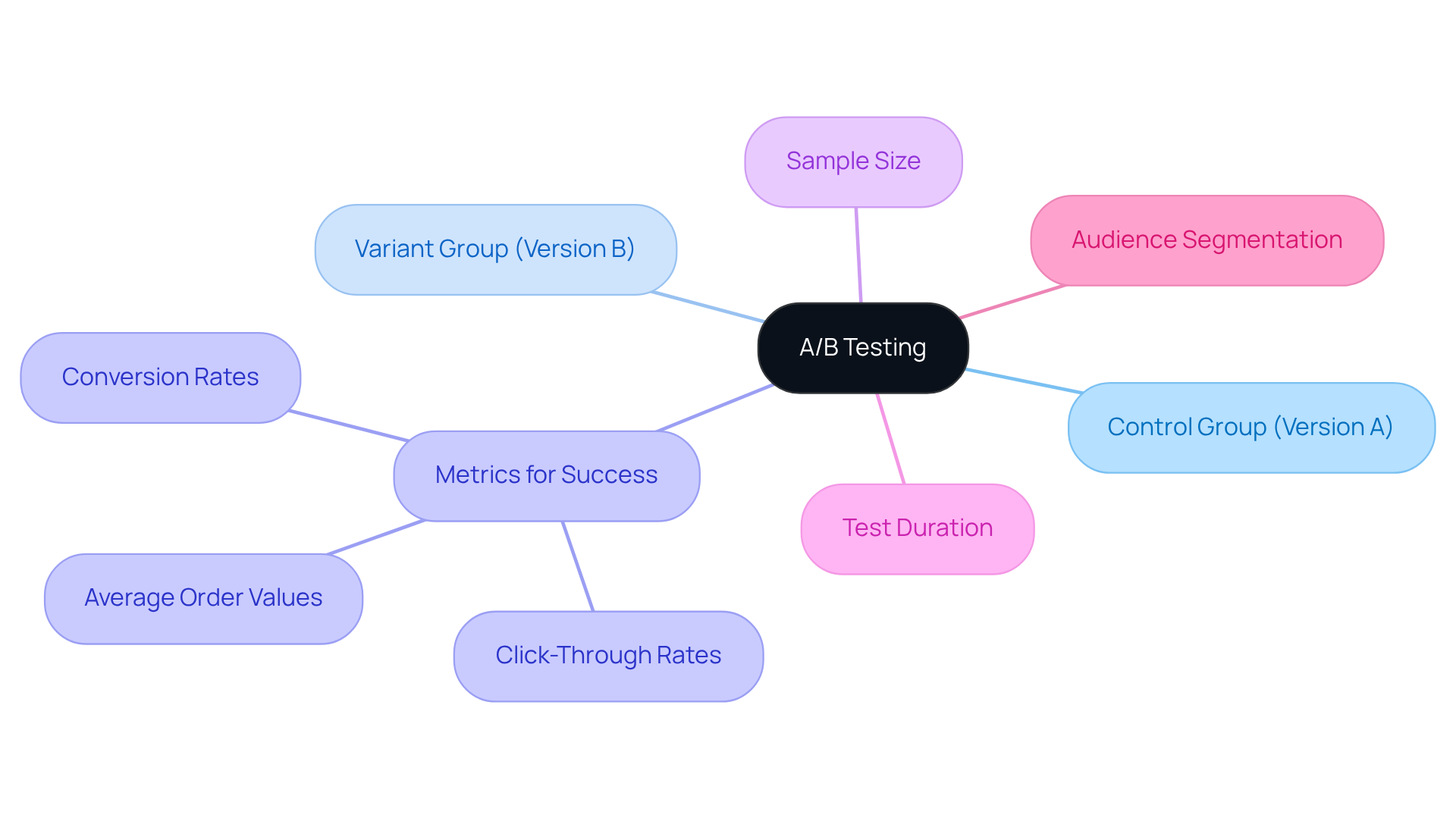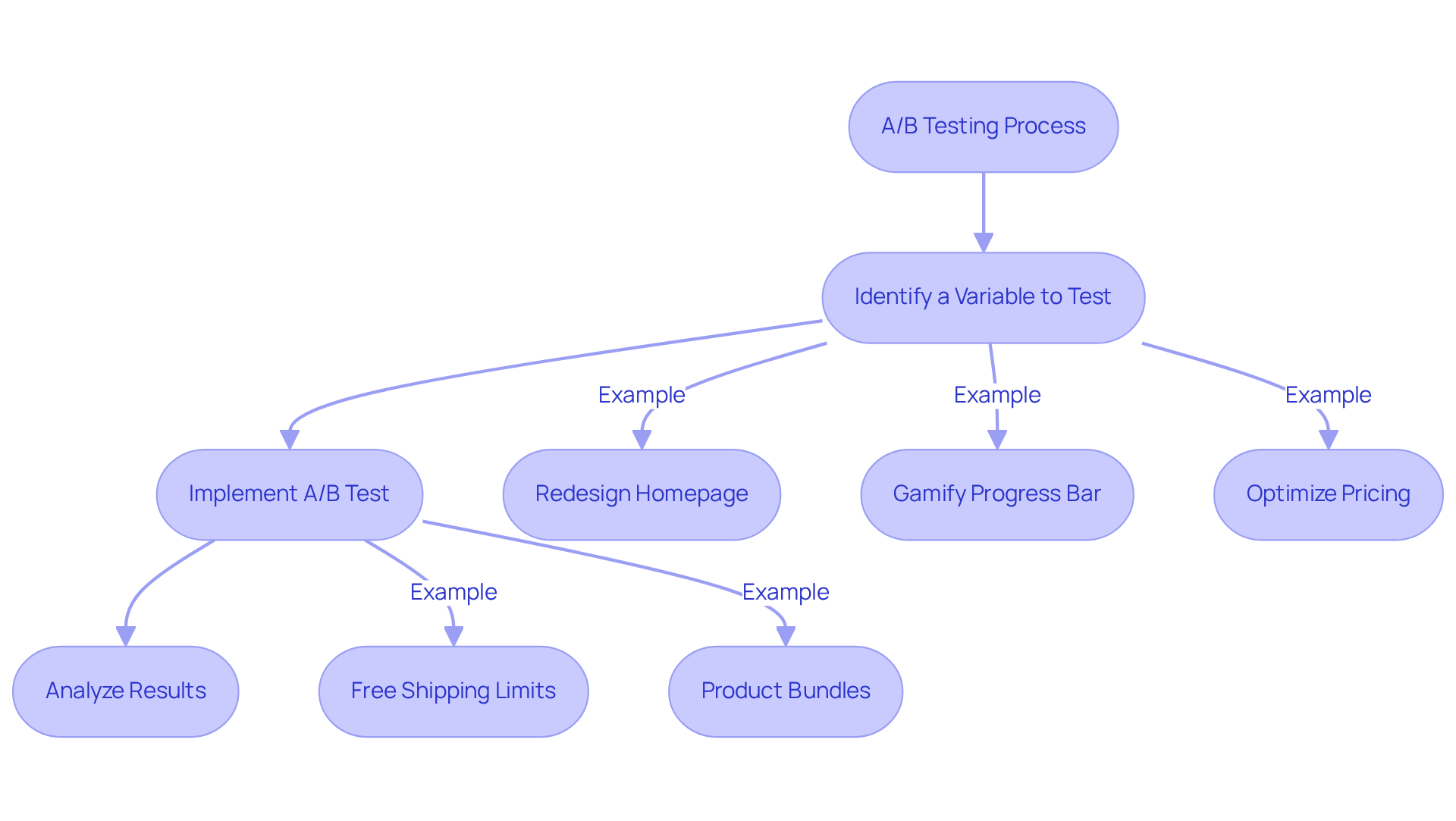
Overview
A/B testing stands as a pivotal methodology for DTC brands, enabling them to compare two versions of marketing assets and ascertain which one produces superior user engagement and conversion rates.
Through systematic evaluations and data-driven decisions, DTC companies can significantly enhance customer experiences and drive substantial revenue growth.
Case studies illustrate this point, showcasing remarkable increases in conversion rates and average order values following the implementation of A/B testing.
This evidence underscores the necessity of adopting such strategies to remain competitive in a dynamic market.
Introduction
A/B testing stands as a cornerstone of modern marketing, particularly for direct-to-consumer (DTC) brands aiming to optimize their online presence. This powerful technique allows companies to compare variations of their promotional assets, unveiling insights that drive user engagement and conversion rates. Yet, in the face of an ever-evolving digital landscape, how can DTC brands effectively harness the potential of A/B testing to ensure sustained growth and profitability? Delving into the intricacies of A/B testing not only highlights its significance but also uncovers strategies that can transform marketing efforts into measurable success.
Define A/B Testing and Its Relevance to DTC Brands
A/B testing meaning encompasses a crucial technique for comparing two versions of a webpage, advertisement, or other promotional assets to determine which performs better in terms of user engagement and conversion rates. For direct-to-consumer (DTC) companies, the A/B testing meaning is particularly significant; it empowers these firms to make data-informed decisions that enhance their promotional effectiveness.
By systematically evaluating variations, companies can identify which elements resonate most with their audience, leading to improved customer experiences and increased sales. For example, a DTC company might test two distinct landing page designs to ascertain which yields higher conversion rates, thereby optimizing their marketing efforts without incurring additional advertising costs.
Engaging with a specialized agency like Parah Group can amplify these initiatives, as they focus on profitability and sustainable development through tailored conversion rate optimization (CRO) strategies that utilize A/B testing meaning to maximize conversions. Parah Group's senior-level team, with extensive experience on both the brand and agency sides, ensures that the strategies implemented align with the key metrics that matter to clients.
Once engaged, clients can anticipate a structured onboarding process that establishes a foundation for long-term growth, aiming to launch initial tests within two weeks. This proactive strategy not only enhances the efficiency of A/B experiments but also underscores the significance of a in fostering business growth.

Trace the Evolution of A/B Testing in Marketing
The origins of A/B evaluation can be traced back to the early 20th century, rooted in statistical experimentation. This practice gained considerable momentum in the advertising sphere during the 1960s and 1970s, particularly with the emergence of direct mail campaigns. Advertisers recognized the importance of evaluating various versions of their materials to determine which produced superior responses.
With the rise of the internet and digital promotion in the late 1990s, A/B experimentation evolved into a more advanced practice, allowing advertisers to assess variations in real-time and collect prompt feedback. Today, the A/B testing meaning stands as a fundamental aspect of digital marketing strategies, particularly for DTC companies that rely heavily on online sales and customer interaction.
For instance, Parah Group has effectively executed A/B experiments for several DTC companies, yielding impressive outcomes.
- A $30M apparel company experienced a 35% rise in conversion rates after enhancing their homepage by emphasizing social proof and minimizing unnecessary pop-ups.
- Similarly, a $15M cleaning product company increased their average order value by 80% through strategic evaluation of free shipping thresholds and product bundles.
These transformational case studies illustrate how not only improves customer engagement but also fosters substantial revenue growth for DTC companies.

Identify Key Components and Characteristics of A/B Testing
The meaning of is a critical methodology in optimizing marketing strategies, characterized by two key components: the control group (version A) and the variant group (version B). These elements are essential for effective comparison.
To evaluate results accurately, it is imperative to define clear metrics for success, including:
- Conversion rates
- Click-through rates
- Average order values
A larger sample size significantly enhances the reliability of the outcomes, ensuring that the findings are robust. Moreover, the duration of the test must be sufficient to capture variations in user behavior over time, providing a comprehensive understanding of the results.
For direct-to-consumer (DTC) companies, effective audience segmentation is vital; this ensures that the test results are relevant and actionable for the target market. By grasping these fundamental components, companies can design and execute A/B tests that help elucidate the A/B testing meaning, ultimately driving their success.

Explain the Importance of A/B Testing for DTC Brands
Understanding A/B testing meaning is paramount for DTC companies, empowering them to make informed decisions grounded in actual user data rather than conjecture. By continuously assessing and refining their marketing strategies, these companies enhance user experiences, which leads to increased conversion rates and revenue growth.
For instance, a $30M clothing label that partnered with Parah Group witnessed a remarkable 35% increase in conversion rates after implementing A/B experimentation techniques. These included:
- Redesigning their homepage to highlight social proof
- Gamifying the progress bar for free shipping thresholds
- Optimizing product pricing
Similarly, Grab Green, a $15M cleaning product firm, boosted its average order value (AOV) by 80% through strategic A/B analyses of free shipping limits and product bundles.
These case studies exemplify the A/B testing meaning by showing how A/B trials enable companies to mitigate risks associated with substantial changes in their marketing strategies, allowing them to experiment with new ideas in a controlled environment. Ultimately, the capacity to adapt and refine marketing initiatives through the is crucial for DTC brands aiming for sustainable growth in a competitive marketplace.
Parah Group's distinctive approach emphasizes profitability and sustainable growth, distinguishing them from other conversion rate optimization agencies.

Conclusion
A/B testing stands as an indispensable tool for direct-to-consumer (DTC) brands, empowering them to base decisions on empirical data rather than mere assumptions. By systematically comparing various versions of marketing assets, DTC companies can refine their strategies to elevate user engagement and drive conversions, ultimately resulting in increased revenue and sustainable growth.
The article underscores the significance of A/B testing through its historical evolution, key components, and real-world applications. From its inception in the early 20th century to its current prominence in digital marketing, A/B testing has proven essential for DTC brands striving to enhance their marketing efforts. Successful case studies illustrate how brands have realized remarkable improvements in conversion rates and average order values through strategic A/B experimentation.
In summary, embracing A/B testing transcends a mere tactical decision; it emerges as a strategic imperative for DTC brands aspiring to excel in a competitive landscape. By harnessing data-driven insights to perpetually refine their marketing approaches, these companies can cultivate superior customer experiences and drive substantial growth. As the digital marketplace evolves, the significance of A/B testing will only escalate, making it crucial for brands to integrate this methodology into their core strategies for enduring success.
Frequently Asked Questions
What is A/B testing?
A/B testing is a technique used to compare two versions of a webpage, advertisement, or promotional asset to determine which one performs better in terms of user engagement and conversion rates.
Why is A/B testing important for direct-to-consumer (DTC) brands?
A/B testing is important for DTC brands as it allows them to make data-informed decisions that enhance promotional effectiveness, improve customer experiences, and increase sales.
How do companies use A/B testing to improve their marketing efforts?
Companies use A/B testing to systematically evaluate variations, such as different landing page designs, to identify which elements resonate most with their audience and yield higher conversion rates.
What role does a specialized agency like Parah Group play in A/B testing?
A specialized agency like Parah Group can enhance A/B testing initiatives by focusing on profitability and sustainable development through tailored conversion rate optimization (CRO) strategies that maximize conversions.
What can clients expect when engaging with Parah Group for A/B testing?
Clients can expect a structured onboarding process that establishes a foundation for long-term growth, with the aim to launch initial tests within two weeks.
How does A/B testing fit into a broader conversion rate optimization (CRO) program?
A/B testing is a crucial component of a comprehensive CRO program, which focuses on fostering business growth by enhancing the efficiency of A/B experiments and aligning strategies with key performance metrics.
FAQs











